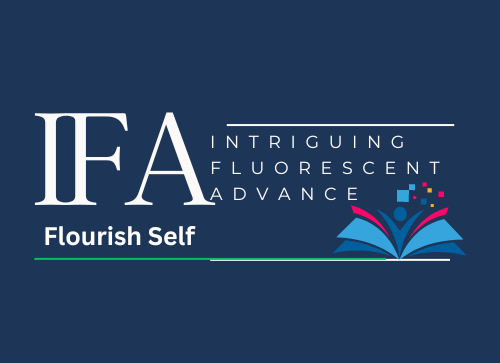
Discover Your Optimal Learning Path | Learning Style Assessments
Learning style assessments are valuable tools that help individuals uncover their preferred learning styles. These assessments enable individuals to understand how they best process and retain information, allowing them to tailor their learning experiences to suit their unique needs and preferences.
Online learning style tests are a convenient and widely used method of conducting these assessments. These tests provide personalized results and recommendations based on individual responses, helping individuals gain insights into their learning tendencies and adapt their approach accordingly.
Learning style inventory tools, such as questionnaires and quizzes, are commonly employed in these assessments. These tools gather information about an individual’s learning preferences, allowing for a comprehensive analysis of their learning style.
Key Takeaways:
- Learning style assessments help individuals identify their preferred learning styles.
- Online learning style tests offer convenience and personalized results.
- Learning style inventory tools provide comprehensive analysis of learning preferences.
- Understanding your learning style allows for tailoring of learning experiences.
- Knowledge of learning style can enhance educational success.
Understanding Learning Styles
Learning styles refer to the different ways in which individuals perceive, process, and retain information. People have unique preferences and strengths when it comes to learning, and understanding one’s learning style can greatly enhance the learning experience.
The most common learning styles are visual, auditory, and kinesthetic. Visual learners prefer to learn through visual aids, such as pictures, charts, and diagrams, as they find it easier to grasp information when it is presented visually. Auditory learners, on the other hand, learn best through listening and verbal communication. They retain information more effectively when they hear it spoken aloud. Kinesthetic learners learn by doing and prefer hands-on activities. They need to engage with the material physically to fully comprehend and retain it.
To determine your learning style, you can take a learning style questionnaire or quiz. These assessments are based on the learning style theory, which suggests that individuals have different strengths and preferences when it comes to learning. A learning style questionnaire consists of carefully designed questions that help identify your preferred learning style. This information can then be used to shape your learning strategies and optimize your learning outcomes.
Identifying your learning style can have a significant impact on your educational journey. It allows you to tailor your studying methods to suit your learning style, making your learning experience more effective and enjoyable. By understanding how you process information best, you can leverage your strengths to enhance your learning and achieve better results.
“The most effective learning takes place when individuals are taught using their preferred learning style. Understanding your learning style can help you to maximize your learning potential.” – Dr. Howard Gardner
Learning Styles Comparison
| Learning Style | Description |
|---|---|
| Visual | Prefer learning through visual aids, such as charts, graphs, and diagrams. |
| Auditory | Learn best through listening and verbal communication. |
| Kinesthetic | Learn by doing and prefer hands-on activities. |
The VARK Model
The VARK model is a widely recognized framework used to determine individuals’ learning style preferences. It categorizes learners into four main styles: visual, auditory, reading/writing, and kinesthetic. The VARK model acknowledges that individuals may have a combination of learning style preferences, with some being more dominant than others.
Visual learners prefer to process and retain information through visual aids, such as images, charts, and diagrams. Auditory learners, on the other hand, learn best through listening and verbal communication. Reading/writing learners thrive when presented with text-based materials, such as textbooks and written notes. Lastly, kinesthetic learners prefer a hands-on approach, engaging in activities that involve movement and touch.
The VARK model is commonly employed in learning style assessments to help individuals identify their preferred learning style. By understanding their learning style preferences, individuals can tailor their study techniques and learning strategies to optimize their learning experience and maximize their potential for academic success.
Visual Learners
- Utilize visual aids, such as charts and diagrams, during studying
- Create mind maps to visually organize information
- Use color-coding techniques to enhance memory retention
Auditory Learners
- Record and listen to lectures or study materials
- Participate in group study sessions or discussions
- Engage in verbal repetition to reinforce concepts
Reading/Writing Learners
- Highlight key information in textbooks or written materials
- Take detailed written notes during lectures
- Create flashcards to review and memorize information
Kinesthetic Learners
- Engage in hands-on activities, such as experiments or simulations
- Use physical movement to reinforce learning, like pacing or gesturing
- Create models or prototypes to understand concepts
Understanding and embracing one’s learning style preference can greatly enhance the learning experience. By tailoring study techniques and strategies to match the VARK model, individuals can optimize their learning outcomes and achieve greater academic success.
Benefits of Knowing Your Learning Style
Understanding your learning style can greatly enhance your personalized learning experience. By identifying your preferred learning style, you can tailor your studying and learning strategies to align with your strengths, leading to more effective studying and improved retention of information.
For visual learners, incorporating visual aids and diagrams during revision can be highly beneficial. These learners can create mind maps or use color-coding techniques to enhance their understanding and retention of information.
Auditory learners, on the other hand, may find it helpful to record and listen to their notes. By listening to recorded lectures or participating in discussions, auditory learners can engage their preferred learning style to reinforce their understanding and retention.
Emphasizing personalized learning strategies that align with your specific learning style can optimize your learning experience and maximize your potential for success.
Knowing your learning style and leveraging it effectively is like discovering the secret key that unlocks the door to effective studying and improved retention. It allows you to create a learning environment that suits your unique strengths, preferences, and needs.
Benefits at a Glance:
| Benefit | Description |
|---|---|
| Personalized Learning | Tailoring your studying and learning strategies to align with your learning style creates a personalized learning experience. |
| Effective Studying | By using strategies that align with your learning style, you can optimize your studying methods to suit your strengths, resulting in more effective learning. |
| Improved Retention | Matching your learning style with appropriate strategies enhances your ability to retain and recall information more efficiently. |
| Learning Strategies | Understanding your learning style helps you identify and implement effective learning strategies that suit your preferred mode of learning. |
Practical Tips for Different Learning Styles
Different learning styles require different study techniques to be effective. By understanding your preferred learning style, you can optimize your learning experience and enhance your academic performance.
Visual Learners
Visual learners process information best through visual aids and imagery. Here are some study techniques tailored for visual learners:
- Utilize visual aids such as mind maps, diagrams, and charts to organize information.
- Highlight key points or concepts using color-coding techniques.
- Create flashcards with relevant images to reinforce memory retention.
Auditory Learners
Auditory learners learn best through listening and verbal communication. If you’re an auditory learner, try these study techniques:
- Record lectures or discussions and listen to them during revision.
- Participate in group study sessions to engage in active discussions.
- Use mnemonic devices or rhymes to help remember important information.
Kinesthetic Learners
Kinesthetic learners thrive through hands-on activities and physical movement. Consider these study techniques if you’re a kinesthetic learner:
- Create models or diagrams to represent complex concepts.
- Take breaks during study sessions to engage in physical activities.
- Use manipulatives or tactile materials to reinforce learning.
Tailoring your study techniques to match your learning style can significantly improve your learning outcomes. Experiment with different approaches and techniques to find what works best for you. Remember, everyone has a unique learning style, and understanding and embracing it can lead to more effective studying and academic success.
Conclusion
Learning Style Assessments are valuable tools for individuals seeking to discover their optimal learning path. By understanding your learning style preferences, you can unlock your full potential and create a customized learning experience. Whether you are a visual, auditory, or kinesthetic learner, knowing your preferred learning style can help you tailor your approach and study techniques to maximize your learning outcomes. Embracing your learning style can lead to greater engagement, improved retention, and ultimately, academic success.
By taking Learning Style Assessments, you gain insights into your unique learning style preferences, allowing you to design a personalized learning journey. Armed with this knowledge, you can choose study techniques and strategies that align with your strengths and make learning more effective and enjoyable. When you leverage your learning style, you not only enhance your understanding and retention of information, but you also become actively engaged in the learning process.
Discovering your learning style preferences empowers you to create an optimal learning path that suits you best. By embracing your learning style, you can make the most of your potential and tap into your innate strengths. Whether you prefer visual cues, auditory explanations, or hands-on experiences, understanding and embracing your learning style preferences can significantly impact your academic journey. So, take the time to explore your learning style through assessments and tailor your learning approach accordingly. By doing so, you can unleash your full potential and pave the way for a successful and fulfilling educational experience.
Frequently Asked Questions
What are Learning Style Assessments?
Learning style assessments are tools used to determine an individual’s preferred learning style. These assessments help individuals understand how they best process and retain information, allowing them to tailor their learning experience accordingly.
How can I take an online learning style test?
Online learning style tests are a popular way to complete these assessments. These tests provide personalized results and recommendations based on individual responses, helping you understand your learning style preferences.
What are learning style inventory tools?
Learning style inventory tools, such as questionnaires and quizzes, are commonly used in learning style assessments to gather information about an individual’s learning preferences and tendencies.
What are the main types of learning styles?
The main types of learning styles are visual, auditory, and kinesthetic. Visual learners prefer to learn through visual aids, auditory learners learn best through listening and verbal communication, and kinesthetic learners learn by doing and prefer hands-on activities.
How does the VARK model categorize learning styles?
The VARK model categorizes learning styles into four main types: visual, auditory, reading/writing, and kinesthetic. It recognizes that individuals may have a combination of learning styles, with some being more dominant than others.
What are the benefits of knowing my learning style?
Understanding your learning style can lead to more effective studying, improved retention of information, and personalized learning strategies that align with your strengths.
How can I optimize my learning outcomes based on my learning style?
Tailoring your study techniques to match your learning style can significantly improve your learning outcomes. For example, visual learners can benefit from using visual aids, auditory learners can listen to recorded lectures, and kinesthetic learners can incorporate hands-on activities.
What are some practical tips for different learning styles?
Visual learners can enhance understanding and retention through visual aids, auditory learners can record and listen to lectures, and kinesthetic learners can incorporate physical movement or create models to reinforce concepts.
What is the importance of Learning Style Assessments?
Learning Style Assessments are valuable tools for individuals seeking to discover their optimal learning path. By understanding your learning style preferences, you can unlock your full potential and create a customized learning experience.

















